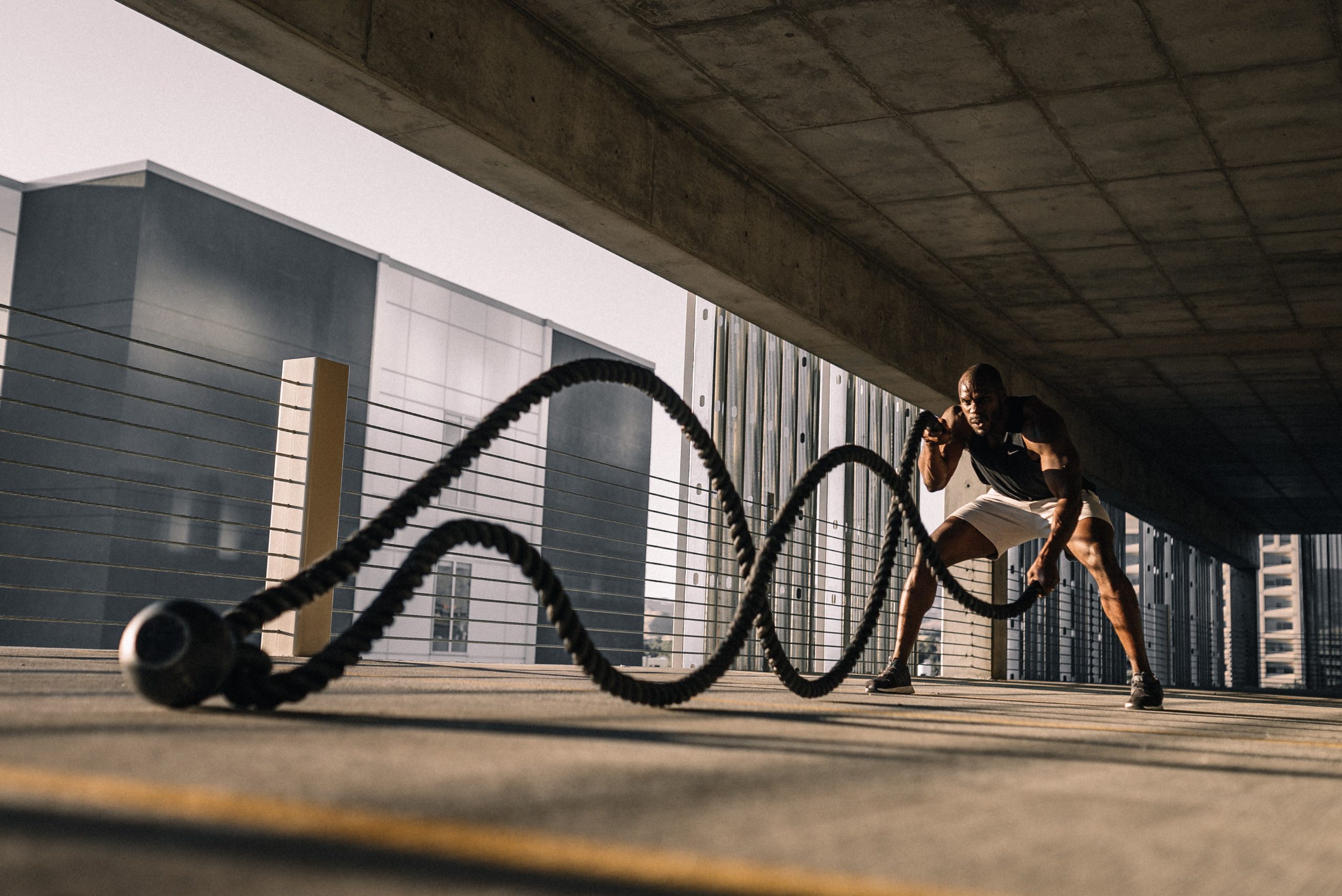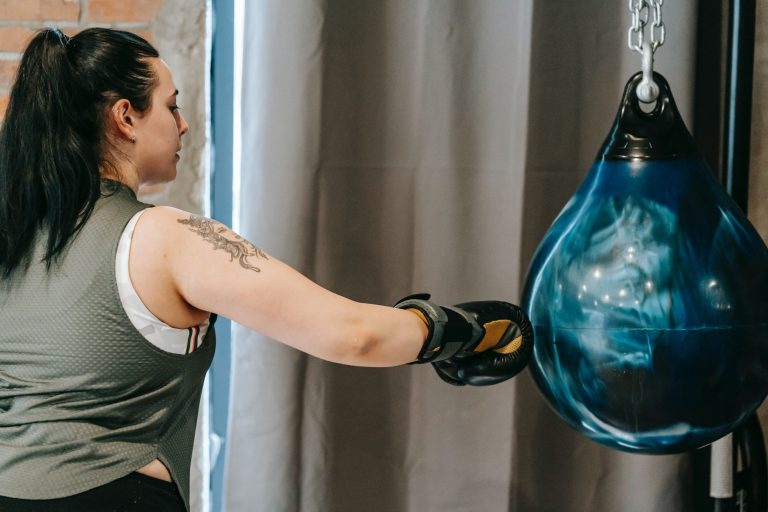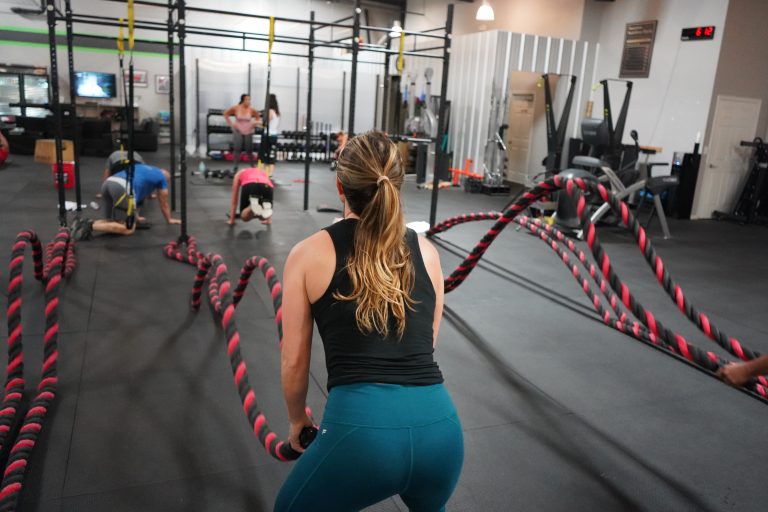Your health practitioner has told you to be more active. There are countless benefits: You will feel better, have more energy, and improve your diabetes management. However, spending time training on a treadmill or stationary bike may feel discouraging. Perhaps with COVID restrictions, you’ve tried pounding the pavement for long painful runs. Nonetheless, you are wondering how you’ll motivate yourself to do steady state cardio, the popular prescription for weight loss. It’s certainly not inspiring, much less sustainable. This form of burning calories can leave you feeling overwhelmed. Well, good news! You don’t need to become a hamster on a wheel to lose weight anymore. That is because the practice of long duration steady state cardiovascular activity is not the best way to lose excess weight. Instead, a more efficient and effective routine that burns more calories with shorter periods of exercise is high intensity interval training.
What Exactly is High-Intensity Interval Training?
High-intensity interval training, or HIIT for short, involves bursts of near maximum effort or exertion. It includes variety of exercises (weight or body-weight exercises, cardiovascular exercises or a combination of both), followed by short rest periods.
Why High-Intensity Interval Training is Better Than Steady State Cardio
1. You continue to burn calories long after you stop working out
With HIIT workouts, you are hitting your maximum effort during bursts of exertion. That is, the more your muscles work at or near maximum effort during intense bursts, the more oxygen they require. Nonetheless, even after short bursts of output, the body continues to consume oxygen. In turn, your body burns calories, sometimes many hours or even a couple of days after the intense exertion. All in all, an easy way to visualize the differences between high-intensity interval training and the traditional steady state cardio is to picture oxygen utilization. During a typical cardio workout, you are in a steady state of oxygen utilization at around 75 percent of your maximum effort. When you cease exercising, your oxygen utilization returns to normal relatively quickly.
During a HIIT workout, you reach maximum or near maximum effort, creating an oxygen deficit. With that, your body will continue to make up this deficit for many hours (up to 48 hours) after your workout. Therefore, your body will continue to burn calories long after your workout is over. This means that you are still burning calories while you are laying on the couch or even while asleep.
2. HIIT has a dramatic effect on insulin sensitivity
Individuals with type 2 diabetes have shown greater weight loss through fat oxidization during and after HIIT workouts vs cardio workouts. HIIT workouts have also been shown to reduce appetite. As a result, people with type 2 diabetes can significantly lower insulin resistance with HIIT workouts. This helps your cells to absorb blood sugar, improving your glucose levels.
3. Your cardio will still improve
During HIIT workouts, you are not only burning more calories, but you are still improving your cardiovascular health. The intense bursts of exertion engage all the energy centers of your muscle cells, creating more efficient muscles. Essentially, you are getting much more bang for your buck while creating more efficient and powerful muscles.
4. You need less time than traditional steady state cardio workouts.
When doing cardiovascular workouts, you exercise at about 75 percent of your maximum effort for at least 40 minutes. Often, much longer. With a warm-up and cool down period, you are doing the same repetitive exercise for at least an hour. However, with a well-designed HIIT workout you can cut that time significantly and fit an intense and effective workout.
27 minutes of HIIT, three times a week produces the same strength and cardio improvements as 60 minutes of cardio, 5 times a week!
5. There are options making HIIT training much more engaging than steady state cardio.
Unlike repetitive cardio workouts, there are many versions of HIIT available to combat the monotony of any exercise program. Always consult with a medical professional and a personal trainer (or HIIT specialist) to get started. Once professionally trained, there are a multitude of free or low-cost options available for HIIT workouts. There are also many equipment-free, body weight workouts available online.
With HIIT you can now cut your workouts in half, while greatly improving the benefits of your exercise program. You’ll have to workout very hard, but only for short bursts. With the variety and efficiency of HIIT, your body and mind will thank you later.
References:
Jelleyman, C, et al. “The Effects of High-Intensity Interval Training on Glucose Regulation and Insulin Resistance: A Meta-Analysis.” Obesity Reviews : An Official Journal of the International Association for the Study of Obesity, vol. 16, no. 11, 2015, pp. 942–61, www.ncbi.nlm.nih.gov/pubmed/26481101, 10.1111/obr.12317.
“How High Intensity Interval Training Can Fix All Your Problems.” Ben Greenfield Fitness – Diet, Fat Loss and
Performance Advice, 12 Sept. 2012,
bengreenfieldfitness.com/podcast/fitness-podcasts/episode-208-how-high-intensity-interval-training-can-fix-all-your-problems. Accessed 7 Oct. 2021.
“How to Do Interval Training.” Ben Greenfield Fitness – Diet, Fat Loss and Performance Advice, 22 Aug. 2011,
bengreenfieldfitness.com/article/the-complete-guide-to-interval-training. Accessed 14 Oct. 2021.
Boutcher, Stephen H. “High-Intensity Intermittent Exercise and Fat Loss.” Journal of Obesity, vol. 2011, 2011, pp. 1–10, 10.1155/2011/868305.
Falcone, Paul H., et al. “Caloric Expenditure of Aerobic, Resistance, or Combined High-Intensity Interval Training Using a Hydraulic Resistance System in Healthy Men.” Journal of Strength and Conditioning Research, vol. 29, no. 3, Mar. 2015, pp. 779–785, 10.1519/jsc.0000000000000661.
Dudley, G. A., et al. “Influence of Exercise Intensity and Duration on Biochemical Adaptations in Skeletal Muscle.” Journal of Applied Physiology, vol. 53, no. 4, 1 Oct. 1982, pp. 844–850, 10.1152/jappl.1982.53.4.844. Accessed 26 Apr. 2021.














